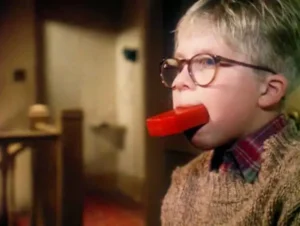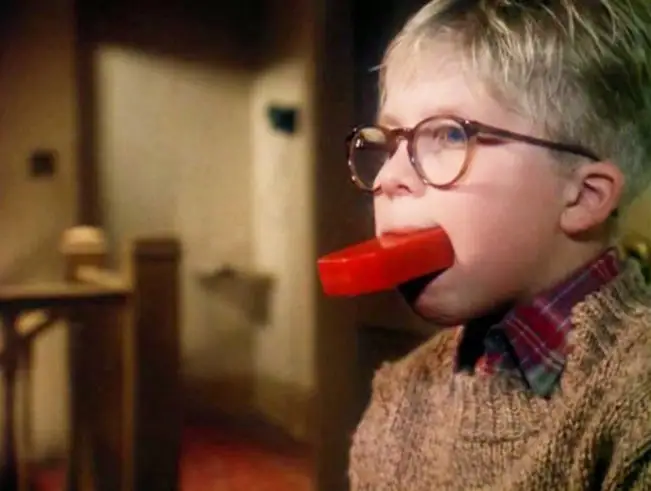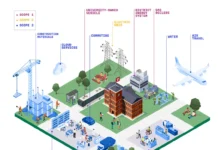If this column’s title makes you think of comedian George Carlin’s 1972 monologue, the ‘Seven Words You Can Never Say on Television,’ then you are old mature like me and know the words cannot be printed in this fine, outstanding publication.

What are the seven, even more dirty and offensive words used in business and the UV industry? “We have always done it that way!” Are you or anyone at your company guilty of using these seven words? If so, I have a red bar of Lifebuoy soap ready to discourage you and to make you think before using these words (Figure One).
We use the seven dirty words because they are a quick and easy response. Each of my columns is written in my ‘spare time’ over a few-month period. When generating this column, I caught myself with the seven dirty words on the tip of my tongue a few times. How do we break the habit of using these words?
Evaluate the reasons why you are doing something a certain way. The original reason may have been decided a long time ago, and you may need to ask yourself some questions:
- Who is ‘we,’ and who made the original decision?
- Is the person or team still around?
- How long is ‘always’?
- What is the impact of this process? Medical and other qualified processes may need to stay ‘locked’ down until a newer way is qualified.
- Why are you still doing it that way?
- Does someone have a better idea?
- Has technology changed since that original decision?
- Is there a better or more efficient way to do things today?
In the UV industry, we each have our own perspective. My stakeholder perspective at EIT 2.0 is one of providing UV measurement solutions, and that is different than a source supplier, formulator or end user. We all need to challenge our thinking and be open to new and innovative ideas. How do we do that?
- Talk to customers about what they need.
- Talk to other stakeholder groups in the UV industry.
- Ask someone outside of the UV industry for their thoughts. A fresh set of eyes in the form of a consultant, board member, process engineer or new design team can offer a fresh viewpoint and may help.
- Talk to your newest employees for ideas. It is amazing what you can learn about your company, processes or products for the cost of a business lunch.
- Have teenagers or college students around? An even less expensive solution than a business lunch is to buy them and their friends a few pizzas. Explain what you do and ask them if they understand what you said. What would they change if they ran your company? What would make your company an attractive place to work? Ask them how they communicate and get their information. Do your current business communication methods reach them?
- Love, hate, scared or don’t understand it, does your business need to explore the use of Artificial Intelligence?
From an overall UV industry perspective, keep the following points in mind:
- If you are reading this, chances are you already believe in the benefits of UV/EB technology.
- Do not lose sight of the fact that UV/EB is one way to manufacture products and that end users explore and consider options from other technologies.
- If you are an end user and not using UV/EB technology, evaluate this technology and compare overall costs to other technologies.
- If you already are using UV/EB, reassess if your older UV systems would benefit from newer UV equipment and/or the use of UV LEDs. Both options can offer significant savings and (often) a quick return on investment (ROI).
- “With great power there must also come great responsibility” is advice Peter Parker/Spiderman first received from Uncle Ben. With increasing utility costs, especially in Europe, maybe it is time to update this 1962 quote to: “With great power there must also come a huge electricity bill.”
EIT 2.0’s focus is providing UV measurement solutions, and we are consciously working to break the ‘we have always done it that way’ mindset. Actions taken include the following:
- Added additional team members with different backgrounds.
- Engaged with outside design firms and consultants to provide a fresh viewpoint for our current products, as well as for future product developments.
- Attended tradeshows and conferences to look at and evaluate new technologies and potential suppliers.
- Talked with current customers, representatives and distributors.
- Received pointed and interesting feedback from teenagers who look at things differently than some of our ‘mature’ team members.
- Commissioned market studies, trade missions and visits with the help, resources and economic support of the Virginia Economic Development Program (VEDP) (www.exportvirginia.org) and its VALET program. Most US states offer a similar economic development program to promote the growth of businesses and their exports.
Some of our new ideas have ruffled more than a few feathers internally. They have made for interesting (i.e., loud and spirited) discussions, which we view as a good thing.
If you are an end user trying to establish, document, maintain and control your UV conditions and a process window, what can you do to break the ‘we have always done it that way’ mindset?
- Establish a maintenance plan for all your UV sources and associated manufacturing equipment, if this has not already been done.
- Buy and stock consumable and replacement items so they are available when needed.
- Do not leave items that are important to your production success up to your purchasing group to open-source based solely on the purchase price. Be sure to buy these items based on value and not on the dollar price. If needed, specify and lock down approved vendors/suppliers based on testing and experience. Examples could be a key replacement bulb or materials from a substrate supplier.
- If you are not already measuring your UV output, what are you waiting for? Use the correct UV instrument for the job. Match the instrument response and dynamic range to your application; then decide on the instrument settings, including sample rate and UV bands to monitor.
- Reevaluate the data you are collecting.
- Have you collected all needed data? Both Joules and Watts if available?
- Do you have the right measurement frequency?
- How is the data being stored and used to make process control and maintenance decisions?
- Are you following the handling, cleaning, care and service guidelines for the UV radiometer?
- Service the instrument at a facility authorized by the manufacturer and follow the recommended service intervals.
The next column will explore the UV measurement routines of two manufacturing locations from the same company producing the same product. One location has stayed the course – i.e., “We have always done it that way.” The other location has revised and improved its approach for measuring and caring for its radiometers.
Summary
Try to avoid automatically using the seven dirty words! Challenge yourself and your company to look at new, different and better ways to run your business and production processes.
Note: Inspiration for this column came from Arnold Schwarzenegger’s book, “Be Useful: Seven Tools for Life.” It is an easy read and a great look into the mindset and persistence that has kept propelling him forward time after time when there were roadblocks.
Parting Thought:
I learn from the mistakes of people who took my advice.
 Jim Raymont
Jim Raymont
Director of Sales
EIT 2.0 LLC
jraymont@eit20.com






